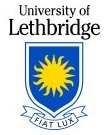Example 3.5.1. Counting marbles, again.
A jar contains 100 blue, green, red and yellow marbles. There are twice as many yellow marbles as blue; there are 10 more blue marbles than red; the sum of the red and yellow marbles is the same as the sum of the blue and green. How many marbles of each color are there?
Solution.
Let’s call the number of blue balls \(b\text{,}\) and the number of the other balls \(g\text{,}\) \(r\) and \(y\text{,}\) each representing the obvious. Since we know that we have 100 marbles, we have the equation
\begin{equation*}
b+g+r+y=100\text{.}
\end{equation*}
The next sentence in our problem statement allows us to create three more equations.
We are told that there are twice as many yellow marbles as blue. One of the following two equations is correct, based on this statement; which one is it?
\begin{equation*}
2y=b \quad\quad \text{or} \quad\quad 2b=y
\end{equation*}
The first equation says that if we take the number of yellow marbles, then double it, we’ll have the number of blue marbles. That is not what we were told. The second equation states that if we take the number of blue marbles, then double it, we’ll have the number of yellow marbles. This is what we were told.
The next statement of “there are 10 more blue marbles as red” can be written as either
\begin{equation*}
b=r+10 \quad\quad \text{or} \quad\quad r=b+10\text{.}
\end{equation*}
Which is it?
The first equation says that if we take the number of red marbles, then add 10, we’ll have the number of blue marbles. This is what we were told. The next equation is wrong; it implies there are more red marbles than blue.
The final statement tells us that the sum of the red and yellow marbles is the same as the sum of the blue and green marbles, giving us the equation
\begin{equation*}
r+y=b+g\text{.}
\end{equation*}
We have four equations; altogether, they are
\begin{align*}
b+g+r+y \amp = 100\\
2b \amp =y\\
b \amp =r+10\\
r+y \amp =b+g \text{.}
\end{align*}
We want to write these equations in a standard way, with all the unknowns on the left and the constants on the right. Let us also write them so that the variables appear in the same order in each equation (we’ll use alphabetical order to make it simple). We now have
\begin{align*}
b+g+r+y \amp =100\\
2b-y \amp =0\\b-r \amp =10\\
-b-g+r+y \amp =0 \text{.}
\end{align*}
To find the solution, let’s form the appropriate augmented matrix and put it into reduced row echelon form. We do so here, without showing the steps.
\begin{equation*}
\left[\begin{array}{cccc|c}1 \amp 1 \amp 1\amp 1\amp 100\\2\amp 0\amp 0\amp -1\amp 0\\1\amp 0\amp -1\amp 0\amp 10\\-1\amp -1\amp 1\amp 1\amp 0\\ \end{array}\right] \quad\quad \overrightarrow{\text{rref}} \quad\quad \left[\begin{array}{cccc|c} 1\amp 0\amp 0\amp 0\amp 20\\0\amp 1\amp 0\amp 0\amp 30\\0\amp 0\amp 1\amp 0\amp 10\\0\amp 0\amp 0\amp 1\amp 40\\ \end{array}\right]\text{.}
\end{equation*}
We interpret from the reduced row echelon form of the matrix that we have 20 blue, 30 green, 10 red and 40 yellow marbles.

